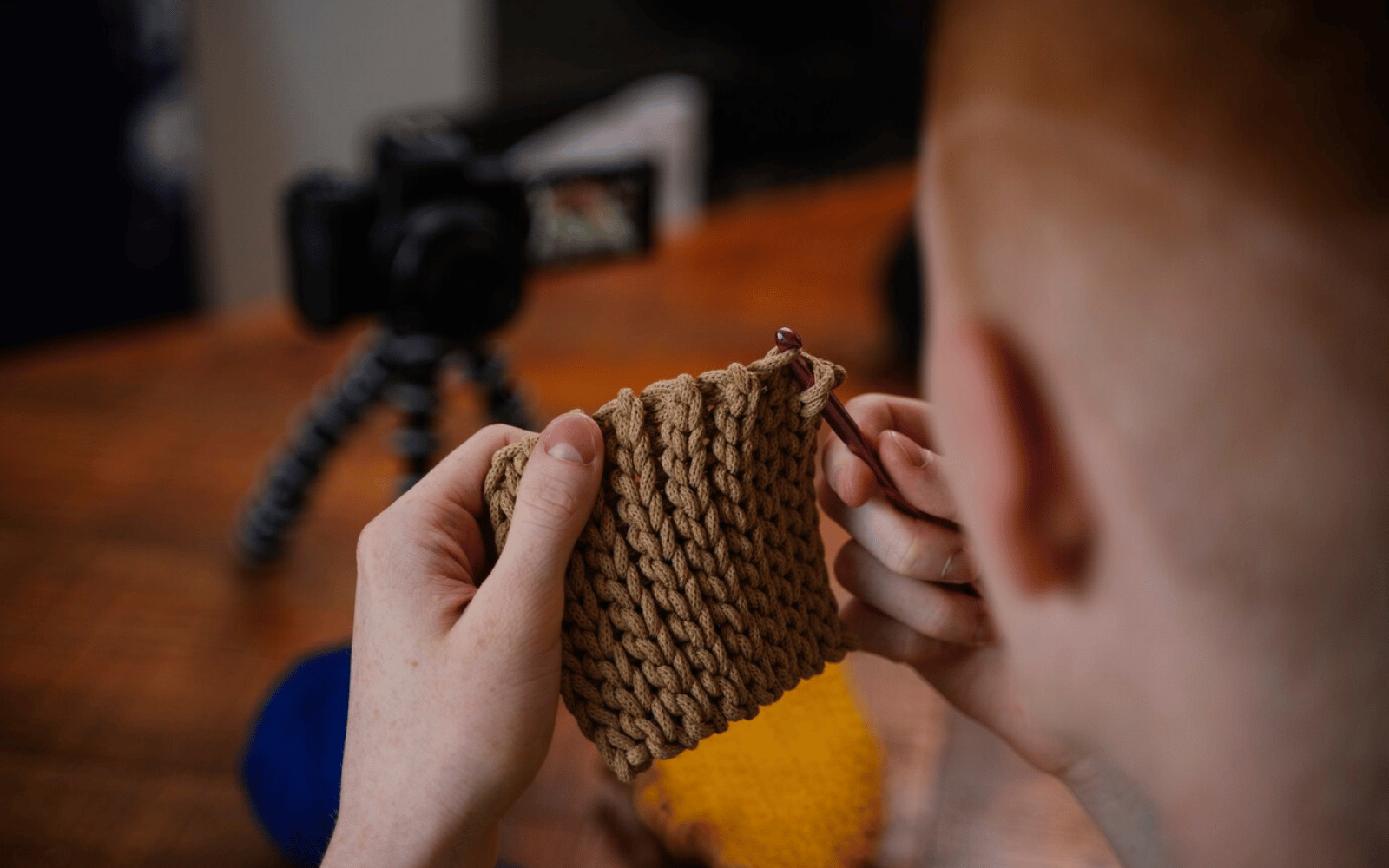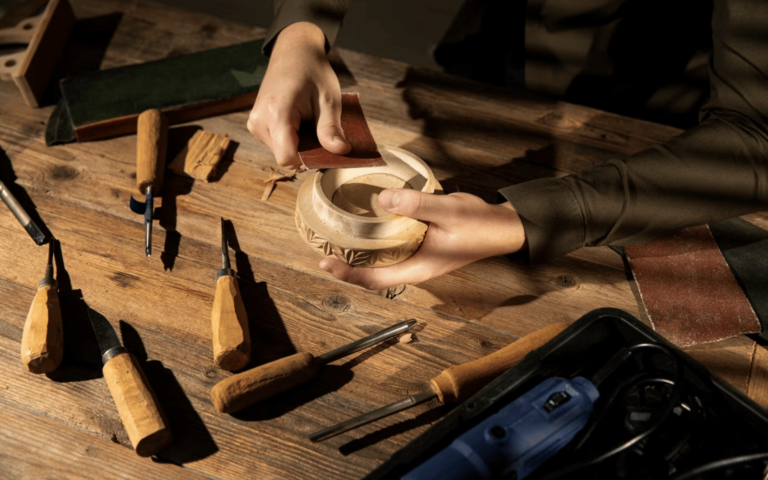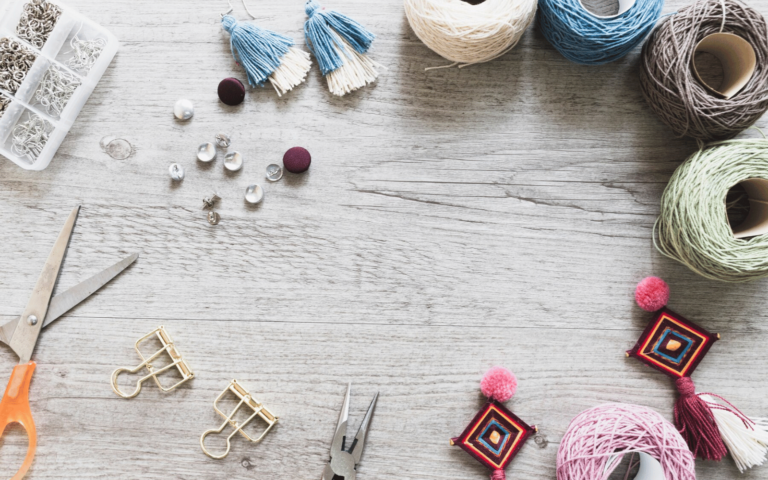The Strength of Crochet Accessories for Teaching Experience
Teaching experience is a multifaceted and dynamic endeavor that transcends the mere dissemination of information; it encompasses the art of nurturing young minds and fostering an environment conducive to comprehensive learning. In this constantly evolving landscape of education, educators find themselves on a perpetual quest for innovative methods that not only captivate the attention of students but also imbue the learning journey with a sense of excitement and relevance. This pursuit is driven by the acknowledgment that traditional teaching methods, while foundational, may benefit from an infusion of creativity and hands-on engagement to truly cater to the diverse needs of today’s learners.
In response to this quest for innovative approaches, the incorporation of crochet accessories emerges as a transformative and revolutionary strategy within the educational paradigm. Far more than a mere craft or pastime, crochet serves as a gateway to a realm where creativity intertwines seamlessly with education. The integration of crochet accessories into the educational landscape represents a departure from conventional methods, ushering in a new era of interactive and experiential learning. This strategic alliance between creativity and education lays the foundation for engaging, hands-on experiences that transcend the boundaries of traditional teaching, leaving an indelible mark on students and fostering a holistic approach to academic growth.
The transformative strength of crochet accessories lies in their ability to serve as catalysts for active participation and immersive learning. In contrast to passive modes of instruction, where students are recipients of information, the incorporation of crochet accessories invites them to become active participants in their educational journey. The tactile and visual nature of crochet engages multiple senses, creating an environment where abstract concepts are brought to life through the tangible and the concrete. This dynamic interaction with the learning material not only deepens understanding but also sparks a genuine enthusiasm for learning that extends beyond the confines of the classroom.
Moreover, the holistic approach facilitated by crochet accessories goes beyond the traditional boundaries of academic growth. It recognizes that education is not solely about the acquisition of knowledge but also about the development of essential life skills. Through the integration of creativity, problem-solving, and critical thinking inherent in crochet, students are not only equipped with subject-specific knowledge but also with a toolkit of transferable skills for their personal and professional journeys. This holistic development aligns with the evolving demands of the 21st century, where adaptability, creativity, and resilience are increasingly valued attributes.
In essence, the incorporation of crochet accessories into teaching represents more than a simple addition to the educational toolkit; it signifies a shift in philosophy towards a more student-centric, interactive, and holistic approach to learning. By seamlessly blending the art of crochet with the science of education, educators create an educational landscape that resonates with the diverse needs and learning styles of their students. The result is an educational experience that transcends the boundaries of traditional methods, leaving an enduring impact on students’ academic growth and nurturing a lifelong love for learning.
Understanding the Impact of Teaching Accessories
Teaching accessories play a pivotal role in shaping the learning environment, catering to diverse learning styles. Visual aids, interactive tools, and tactile materials significantly contribute to students’ comprehension and retention of information. The integration of crochet accessories takes this a step further, offering a unique blend of visual and tactile stimuli. Students not only observe concepts coming to life but also actively engage in the learning process, promoting a deeper understanding of the subject matter.
Furthermore, the benefits of incorporating creative elements into teaching methodologies extend beyond the immediate classroom experience. Research indicates that such methods have a positive correlation with student participation and memory retention. Crochet accessories, with their hands-on nature, not only cater to different learning styles but also create an environment where students can examine their creativity while learning academic content. This holistic approach to education fosters a love for learning that extends beyond the classroom.
The Art of Crochet in Education
Crochet, often perceived as a leisurely pursuit, finds a profound purpose as an educational tool. The simplicity and versatility of crochet make it an ideal medium for achieving various educational objectives. Looking back at historical contexts reveals that crochet has been used in educational settings for centuries, evolving from a domestic craft to a valuable pedagogical tool with applications that resonate across different subjects and age groups.
As an educational tool, crochet offers a plethora of benefits. The intricate hand movements required in crocheting contribute to the development of fine motor skills, especially in younger students. Additionally, the cognitive benefits derived from pattern recognition in crochet can be harnessed for academic purposes. The therapeutic aspects of crochet further add to its appeal, providing students with a constructive outlet for reduction and management. In essence, crochet transcends its traditional role, becoming a vehicle for holistic student development.
Crochet Accessories: Tools for Teaching Success
Diving into the specifics of crochet accessories unveils the critical role of crochet hooks and yarn in the educational process. Crochet hooks, available in various sizes and materials, become more than mere tools for crafting; they transform into instruments for enhancing fine motor skills in students. Educators can strategically choose crochet hooks that align with the age group, ensuring a seamless integration into the curriculum that caters to the developmental needs of each student.
Similarly, the selection of yarn becomes a key element in the educational toolkit. Different yarn textures cater to sensory learning, offering a multisensory experience that aids in information retention. Colors play a pivotal role, not only for aesthetic appeal but also for practical application in subjects like mathematics, where visual representation can significantly enhance understanding. The thoughtful combination of crochet hooks and yarn creates a dynamic learning experience that goes beyond conventional teaching methods.
Moreover, the tangible nature of crochet accessories provides students with a hands-on experience, promoting a deeper connection with the subject matter. Whether it’s the tactile feedback of handling a crochet hook or the visual impact of vibrant yarn, students are actively involved in the learning process. This approach not only facilitates academic understanding but also cultivates a sense of creativity and resourcefulness in students.
Crochet Patterns for Educational Objectives
The art of crochet extends beyond the basic stitches and evolves into a realm where intricate patterns become a means to achieve specific educational goals. Designing crochet patterns tailored to academic subjects provides a structured approach to integrating crochet into the curriculum. In mathematics, crochet becomes a tool for teaching counting and understanding geometric shapes in a tangible, hands-on manner.
Language arts find expression through crochet patterns as well, with characters and stories taking shape through the creative manipulation of yarn. Science classes witness the creation of crochet models, bringing abstract concepts to life through tangible and visually appealing representations. The versatility of crochet patterns allows educators to tailor their approach to suit diverse learning objectives, ensuring that the integration of crochet aligns seamlessly with the academic curriculum.
Moreover, the process of creating intricate crochet patterns instills a sense of discipline and focus in students. Following a pattern requires attention to detail and adherence to a set of instructions, fostering skills that extend beyond the realm of crafting. This transferability of skills enhances the overall educational experience, contributing to the development of critical thinking and problem-solving abilities.
Crochet Workshops: Fostering a Creative Learning Environment
Organizing crochet workshops emerges as a dynamic and innovative strategy to foster a creative learning environment within schools. These workshops offer a departure from traditional teaching methods, creating a space where students actively participate in the learning process. The collaborative nature of crochet projects encourages teamwork, building a sense of camaraderie among students as they collectively embark on a creative journey.
Crochet workshops not only focus on the end product but also emphasize the journey, fostering a sense of achievement and pride in the students’ creations. The peer-to-peer learning dynamic that unfolds in a crochet workshop setting adds an extra layer to the educational experience. Students not only learn from the instructor but also from their peers, creating a symbiotic learning ecosystem where knowledge is shared and skills are honed collectively.
Collaborative crochet projects further contribute to the holistic development of students. As they work together to bring a shared vision to life, they develop essential skills such as communication, problem-solving, and project management. These workshops thus become a transformative experience, transcending the boundaries of traditional education and paving the way for a more dynamic and interconnected learning community.
Moreover, the experiential nature of crochet workshops makes learning memorable. Students remember not just the facts and figures but also the process of creating something tangible. This hands-on experience adds a layer of depth to their education, making lessons more enduring and meaningful. As students see the direct application of their efforts in the form of a completed crochet project, they develop a sense of accomplishment that extends beyond the confines of the classroom.
Overcoming Challenges in Implementing Crochet Accessories
While the benefits of incorporating crochet accessories into education are evident, educators may encounter challenges in the implementation process. Addressing common concerns and misconceptions is to fostering widespread acceptance of creative teaching methods. Budget constraints often top the list of concerns, but cost-effective solutions exist, making crochet an accessible tool for schools with limited resources.
One effective strategy to overcome budget constraints is seeking community support. Engaging with local businesses, community organizations, and even parents can provide the necessary resources to implement crochet programs. Community partnerships not only alleviate financial burdens but also create a sense of shared responsibility for education, fostering a collaborative approach to student development.
Resistance to incorporating creative methods in teaching can also pose a challenge. Educators and administrators may be hesitant to deviate from traditional teaching approaches, ing potential disruptions or lack of academic rigor. However, showcasing the tangible benefits, both academically and socially, can help alleviate these concerns. Real-world examples of successful implementation and positive outcomes serve as persuasive tools, demonstrating that crochet is not just a creative indulgence but a strategic educational tool.
Furthermore, professional development opportunities can fortify educators to confidently integrate crochet into their teaching methods. Workshops, training sessions, and collaborative learning experiences can equip teachers with the skills and knowledge needed to effectively incorporate crochet accessories into the curriculum. Overcoming challenges requires a proactive and collaborative approach, where educators, administrators, and the community work together to create a meaningful and sustainable framework for integrating crochet into the educational landscape.
Case Studies: Schools Transforming Education with Crochet Accessories
Real-world examples stand as testimonials of the transformative impact of incorporating crochet accessories into education. Schools that have embraced this innovative approach report not only an increase in student engagement but also notable improvements in academic performance. These case studies serve as beacons, guiding other educational institutions toward the potential of crochet in shaping a dynamic and effective learning environment.
In these case studies, educators share their experiences, detailing the shift in classroom dynamics and the positive outcomes observed after introducing crochet into the curriculum. The tangible benefits go beyond academic achievements, extending to social and emotional development. Students exhibit increased confidence, improved teamwork, and a heightened sense of creativity—attributes that are invaluable in preparing them for future challenges.
Additionally, interviews with students provide a firsthand account of the impact of crochet on their educational journey. Many express a newfound enthusiasm for learning, citing the interactive and hands-on nature of crochet as a catalyst for their engagement. These case studies underscore the adaptability and effectiveness of crochet in diverse educational settings, offering inspiration for schools contemplating the integration of creative methods into their teaching methodologies.
Future Prospects: Expanding the Horizon of Crochet in Education
As we look to the future, the role of crochet accessories in education appears poised for expansion and diversification. The evolving landscape of education demands innovative approaches, and crochet, with its proven track record, stands as a versatile tool capable of meeting these demands. Beyond the conventional subjects, the potential applications of crochet in interdisciplinary learning scenarios beckon, offering educators a broader canvas to weave creative and educational elements seamlessly.
Potential collaborations with educational institutions, organizations, and businesses open up new avenues for the integration of crochet into diverse learning environments. Partnerships with art studios, craft organizations, and community centers can provide additional resources and expertise, enriching the educational experience for students. This collaborative approach not only extends the reach of crochet in education but also fosters a sense of community engagement in the learning process.
Research opportunities emerge as a aspect of the future prospects of crochet in education. In-depth studies can delve into the nuanced impact of crochet on cognitive development, providing empirical evidence of its efficacy as an educational tool. Such research can contribute valuable insights to educational policymakers, helping shape the direction of future curricular approaches that incorporate creative and hands-on learning experiences.
Integrating Handcrafted Accessories into Educational Settings
In the ongoing quest for innovative and effective teaching methods, the integration of handcrafted accessories into the classroom has emerged as a remarkably subtle yet powerful strategy. This approach, particularly through the use of crochet accessories, offers a unique blend of tactile engagement and visual stimulation that caters to diverse learning preferences among students. These accessories, ranging from simple crochet bookmarks to intricate wall hangings, serve not only as tools for specific educational tasks but also as symbols of the creativity and dedication inherent in the teaching profession.
Handcrafted crochet items bring a personal touch to the educational space, making the environment feel more welcoming and less institutional. Teachers who introduce these items into their classrooms often report a noticeable increase in student engagement. This could be attributed to the sensory appeal of the materials used in crochet, which can help to maintain student attention and interest over longer periods. Moreover, the versatility of crochet allows educators to tailor designs and patterns to suit various academic subjects, thereby enhancing the relevance of the materials to the curriculum.
For instance, in mathematics, teachers can use crochet patterns to illustrate geometric concepts or to model data sets visually through the creation of 3D crochet graphs. In history or literature classes, specific colors and patterns can evoke a particular time period or theme, offering a tactile dimension to the learning experience that can enrich student understanding and retention of the subject matter. Furthermore, the act of creating these accessories can be incorporated into the curriculum itself, encouraging students to engage in hands-on learning and to appreciate the value of craftsmanship and detail.
The effectiveness of crochet accessories in education also lies in their ability to bridge the gap between traditional and innovative teaching methodologies. While they harness the appeal of novel educational tools, they also reinforce classic educational values such as diligence, precision, and patience. Additionally, these tools foster an inclusive learning environment. Students with different learning needs, including those who may not excel in conventional academic settings, often find that hands-on activities like crochet allow them to express their understanding and talents in new and meaningful ways.
Moreover, the incorporation of handcrafted crochet items into teaching practices can subtly encourage the development of fine motor skills, pattern recognition, and spatial awareness. These skills are crucial not only in academic contexts but also in everyday problem-solving and personal development. The process of following a crochet pattern can parallel the process of following mathematical instructions or algorithms, thereby reinforcing these cognitive pathways in a practical, engaging manner.
The inclusion of crochet in educational settings also promotes sustainability and mindfulness. By using biodegradable materials like wool or cotton, educators can introduce discussions about environmental impact and the importance of using sustainable resources. This can lead to broader conversations about global issues, thereby enhancing the educational value of the crochet projects beyond mere craft.
The integration of crochet accessories into educational environments represents a convergence of art, craft, and science that enhances the teaching and learning experience. This approach not only supports academic objectives but also cultivates a classroom atmosphere that values creativity, individual expression, and ecological awareness. As educators continue to seek out methods that combine effectiveness with innovation, crochet stands out as a uniquely adaptable and profoundly impactful tool in the educational arsenal, bringing a rich array of benefits to both teachers and students alike.
Outcome
The strength of crochet accessories in enhancing the teaching experience is undeniable. From understanding the impact of teaching accessories to test the art of crochet in education and delving into the tools for teaching success, each facet contributes to a comprehensive framework that reshapes traditional education paradigms. The journey through crochet patterns, workshops, and overcoming challenges highlights the resilience and adaptability of this innovative approach.
Case studies serve as tangible evidence of the positive transformation occurring in schools that have embraced crochet in education. The collaborative and hands-on nature of crochet workshops fosters a creative learning environment while overcoming challenges becomes a testament to the dedication of educators in paving the way for a more dynamic and engaging educational experience.
Looking ahead, the future prospects of crochet in education hold promises of expansion, collaboration, and research that will continue to redefine the boundaries of traditional education. As educators, students, and communities join hands in this transformative journey, crochet accessories stand as not just tools for teaching but gateways to a more holistic, inclusive, and dynamic approach to learning—one that prepares students for the challenges and opportunities of the future.







